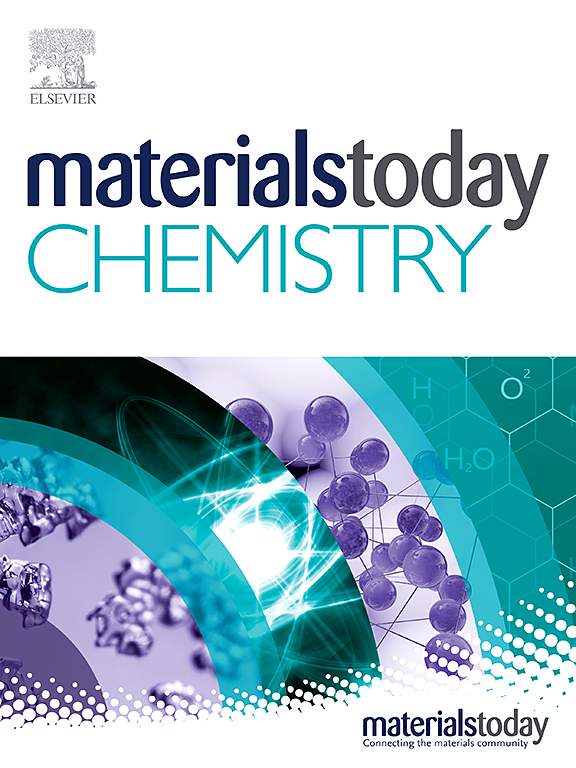Synthesis, characterization and photoelectrochemical performance of Bi2Fe4O9 thin films
IF 6.7
2区 化学
Q1 CHEMISTRY, MULTIDISCIPLINARY
引用次数: 0
Abstract
Mullite-type BiFeO has been little explored in thin film form as a photoanode for photoelectrochemical water splitting. In this study, BiFeO thin films have been prepared using the sol-gel technique from a simple precursor solution based on the corresponding metal salts, acetic acid, and polyvinyl alcohol. The films were deposited by dip-coating onto fluorine-doped tin oxide substrates and dried at 350 °C, repeating the dipping-drying cycle six times, and finally sintered at 600 °C. The films were characterized by GIXRD, revealing the formation of the material in its orthorhombic phase. Raman spectroscopy showed the A and B vibrational modes, validating the formation of the bismuth iron oxide. UV–Vis transmittance measurements revealed that the material exhibits two optical transitions: a direct band gap of 2.86 eV and an indirect band gap of 1.98 eV. FESEM micrographs and AFM images showed a uniform nanostructured surface morphology. The photoelectrochemical properties of the BiFeO films were studied using cyclic voltammetry and chronoamperometry with front side illumination, demonstrating the stability of the material in aqueous media and the generation of photocurrent in the presence of HO. Furthermore, results from intensity-modulated photocurrent spectroscopy (IMPS) revealed that the photocurrent is limited by both bulk and surface recombination and a short hole diffusion length.Bi2Fe4O9 薄膜的合成、表征和光电化学性能
以薄膜形式将莫来石型 BiFeO 用作光电化学分水的光阳极的研究还很少。本研究采用溶胶-凝胶技术,从基于相应金属盐、醋酸和聚乙烯醇的简单前驱体溶液中制备了 BiFeO 薄膜。薄膜通过浸涂沉积在掺氟氧化锡基底上,然后在 350 ℃ 下干燥,重复浸涂-干燥循环六次,最后在 600 ℃ 下烧结。利用 GIXRD 对薄膜进行了表征,结果表明材料是以正交相形成的。拉曼光谱显示了 A 和 B 振荡模式,验证了氧化铁铋的形成。紫外-可见透射测量显示,该材料有两个光学转变:2.86 eV 的直接带隙和 1.98 eV 的间接带隙。FESEM 显微照片和 AFM 图像显示了均匀的纳米结构表面形态。研究人员使用循环伏安法和计时电流法研究了 BiFeO 薄膜的光电化学特性,结果表明该材料在水介质中具有稳定性,并能在 HO 存在的情况下产生光电流。此外,强度调制光电流光谱法(IMPS)的研究结果表明,光电流受到体重组和表面重组以及短空穴扩散长度的限制。
本文章由计算机程序翻译,如有差异,请以英文原文为准。
求助全文
约1分钟内获得全文
求助全文
来源期刊

Materials Today Chemistry
Multiple-
CiteScore
8.90
自引率
6.80%
发文量
596
审稿时长
33 days
期刊介绍:
Materials Today Chemistry is a multi-disciplinary journal dedicated to all facets of materials chemistry.
This field represents one of the fastest-growing areas of science, involving the application of chemistry-based techniques to the study of materials. It encompasses materials synthesis and behavior, as well as the intricate relationships between material structure and properties at the atomic and molecular scale. Materials Today Chemistry serves as a high-impact platform for discussing research that propels the field forward through groundbreaking discoveries and innovative techniques.
 求助内容:
求助内容: 应助结果提醒方式:
应助结果提醒方式:


